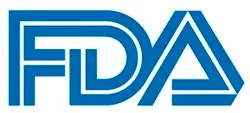FDA Issues Complete Response Letter for Ruxolitinib Extended-Release Tablets in MPNs
The FDA has issued a complete response letter for ruxolitinib extended-release tablets for use once daily in the treatment of patients with certain types of myelofibrosis, polycythemia vera, and graft-vs-host disease.
FDA

The FDA has issued a complete response letter (CRL) for ruxolitinib extended-release tablets for use once daily in the treatment of patients with certain types of myelofibrosis, polycythemia vera, and graft-vs-host disease (GVHD), indicating that the regulatory agency cannot approve the application in its current form.1
The FDA stated that although the study submitted in the new drug application (NDA) demonstrated bioequivalence based on area under the curve (AUC) parameters, additional criteria are needed for approval.
“While we are disappointed that the FDA issued a CRL for ruxolitinib extended-release tablets, we remain committed to advancing care for people with myeloproliferative neoplasms and GVHD,” Hervé Hoppenot, chief executive officer of Incyte, said in a press release. “We will work closely with the FDA on the appropriate next steps to address their comments.”
Ruxolitinib (Jakafi) is currently dosed twice-daily using an immediate release formulation for the treatment of patients with myelofibrosis, polycythemia vera, and acute GVHD. An extended-release formulation of ruxolitinib was developed to allow once-daily dosing. Five extended-release tablet strengths were developed, containing 10 mg, 20 mg, 30 mg, 40 mg, and 50 mg of ruxolitinib, free-base equivalent.2
The NDA was based on two studies that were designed to show that ruxolitinib extended-release tablets are proportional in dosage strength and bioequivalent to ruxolitinib tablets.1 The first study measured the relative bioavailability of ruxolitinib extended-release tablets to ruxolitinib tablets and the dose strength proportionality between ruxolitinib extended-release tablets and ruxolitinib tablets.
In the second study, a phase 1, open-label, randomized, two-period, two-way crossover study (INCB 18424-139), investigators enrolled 63 healthy adults to compare the bioequivalence of the highest strength of ruxolitinib extended-release tablets (50 mg) dosed once-daily with the highest strength of ruxolitinib tablets (25 mg) dosed twice-daily using an immediate release formulation, following a single dose and at steady-state.
In the first treatment period, individuals were randomly assigned to receive extended release ruxolitinib or immediate release ruxolitinib.2 After a 9-day washout period, participants proceed to the second treatment period 2 and crossed over to receive the other formulation not yet received. Each treatment period consisted of single-dose and multiple-dose parts. In the single-dose part of the study, participants received 50 mg of extended release ruxolitinib as a single dose or immediate release ruxolitinib as 2 doses of 25 mg each administered 12 hours apart. In the multiple-dose portion of the study, participants received 50 mg of extended release ruxolitinib once daily for 4 doses or immediate release ruxolitinib twice daily for 4 days totaling 8 doses.
Standard non-compartmental pharmacokinetic (PK) analysis methods were used to determine PK parameters. Average bioequivalence analysis was performed for the determination of geometric mean ratio (GMR) and 90% confidence interval (CI) for the comparison of PK parameters between the extended-release formulation and the reference formulation. Bioequivalence criteria required the point estimate and 90% CI limits to lie within the range of 0.8 and 1.25.
The measures used for bioequivalence evaluation included Cmax, C24h, AUC0-t, and AUC0-∞ from the single-dose part, and Cmax,ss, C24h, and AUC0-24h from the multiple-dose part. Safety and tolerability were based on the frequency and severity of adverse effects; physical examinations; vital signs, 12-lead electrocardiograms, and clinical laboratory data.
Findings from the trial demonstrated bioequivalence between the extended-release and regular ruxolitinib tablets based on AUC parameters. However, bioequivalence was not achieved for Cmax or C24h. Both treatments were well tolerated, and no new safety concerns were identified with the extended-release tablets.
Ruxolitinib tablets are currently approved by the FDA for the following indications: polycythemia vera (PV) in adults who have had an inadequate response to or are intolerant of hydroxyurea; intermediate or high-risk myelofibrosis, including primary myelofibrosis, post-polycythemia vera myelofibrosis and post-essential thrombocythemia myelofibrosis in adults; steroid-refractory acute GVHD in adult and pediatric patients 12 years and older; and chronic GVHD after failure of one or two lines of systemic therapy in adult and pediatric patients 12 years and older.3
References
- Incyte provides regulatory update on ruxolitinib extended-release tablets. News release. Incyte. March 23, 2023. Accessed March 24, 2023. https://investor.incyte.com/news-releases/news-release-details/incyte-provides-regulatory-update-ruxolitinib-extended-release
- Gong X, Punwani N, Cimino E, et al. Bioequivalence of 50 mg once-daily ruxolitinib extended release (xr) tablets compared to 25 mg twice-daily ruxolitinib immediate release (ir) tablets. Presented at: 2021 EHA Congress; June 10-13, 2021; Virtual. Accessed March 24, 2023. PB1706
- Important prescribing information: Jakafi. Incyte. September 2021. Accessed March 24, 2023. https://www.accessdata.fda.gov/drugsatfda_docs/label/2021/202192s023lbl.pdf



